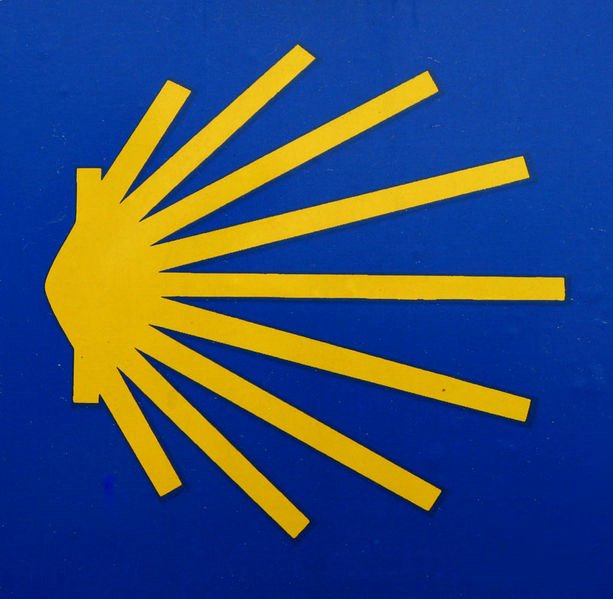Jaén
The bus trip from Granada to Jaén was almost more interesting than the town itself. It takes about an hour and a half to drive through the Sierra Haranas--the southern end of the Sierra Nevada range. Every once and a while a mountain or a cliff would be topped by a Moorish watch tower or a monastery; all such monuments were falling to ruin, melting in the elements of southern Spain. Just at the end of the trip, we seemed to emerege from the mountains and suddenly low-rolling hills covered with olive trees extended for as far as the eye could see. Jaén is the gateway from Andalusia to Castile, and the topography must have gathered the attention of generations of travelers. The town is situated at the bottom of a crested butte, and for at least 20,000 years, people have lived in the area. Rock carvings in caves along the cliff line and on the hill bear witness to human habitation before history can recall their names. In the 2nd century BCE, the Romans built a small fortress at the top of the hill, only to find themselves supplanted by the Visigoths in the 5th century AD. These Germanic invaders, in turn, gave way to the Moors who built a town with impressive bathes below the hill and a fortress--sort of a smaller version of the Alhambra--looking out into the precious land of Castile. By the mid-1200s, Christians had taken the area, and Alphonso X (El Sabio--remember!?) built a wall around the town as well as making improvments to the hill. In 1808, the French under Napoleon occupied Andalusia and improved the fort to become their southern headquarters. Today, the hill is a picnic spot for locals and home to one of Spain´s Paradors--luxury hotels usually located on historic sites.
There´s your thumb-nail sketch of the hill, and the ruins on top were truly impressive, but the remainder of the town was a little lackluster. Only about 150 feet of Alphonso´s wall in town remains. No street or monument can be seen that dates before 1500. In fact, two churches that were dated prior to that period turned out to have collapsed in the last 150 years and are rebuilt with nothing like their former glory. The only elements of the town that didn´t disappoint were the Museum of Anthropology and the Catherdal. The museum held a number of artifacts that traced the town´s long history--and enabled me to provide the description above. The cathedral was magnificant--a 16th century work in Renaissance and early Neo-Classical style that took over a hundred years to finish. The interior walls were the tallest I´ve seen in a church on this trip--so tall as to be difficult to photograph. I literally suppressed a gasp when I first entered the church. At the end of the central nave was an ornate alter dedicated to Veronica´s Veil. If you´re not familiar, according to legend Veronica used a cloth to wipe the face of Christ as he was on his difficult way to Golgotha. The image of Christ´s face was left in the cloth. For the Spanish, this cloth rivals the shroud of Turin, and the cathedral was intended to be a fitting tribute to such an important relic. Just before mass that evening, the cloth was brought out and shown to a crowd of about 200 people. Usually, it´s only on display for Friday mass, but the bishop himself called for bringing out the relic because it´s a special day (see below). Watching the veneration engendered by this cloth--the clear adoration and amazement on the faces of those gathered there--certainly brought me closer to the world of writers like Chaucer, Kempe, Langland, and Julian of Norwich. It´s one of the reasons why I made this trip.
I had to stay in a very poor pensión (rooms offered by locals) because every room in town was taken when I arrived. I had no idea, but today was Andalusia Day--a time of provincial pride for all Andalusians. EVERYTHING was closed--even most of the cafes. Just my luck, Jaén was the Andalusian city chosen to host this year´s celebration. That meant that there was a free concert of Andalusian folk music in the City Center featuring the talents of José Luis Caño!--you know, Andalusia´s formost singer! I did listen for about 45 minutes, but I was too tired to stay for the fireworks. I had walked up the hill--a distance of about 4.5 miles--and back down that day aside from wandering throughout town. I was leg-weary and happy to go to my little room (and shared bath) in the pensión. This entry is actually a day behind--there was no computer in Jaén, so I´m already in Córdoba. But news of this stop can wait until morning. I´ll be here a couple of days--it´s a UNESCO World Heritage city, and there´s lots to see. ¡Hasta luego!


1 Comments:
20k...is that all...walk the walk ♪ and ♪talk the talk, mi hermano ☺ ♫ ☻ ...vaya con dios
Post a Comment
<< Home